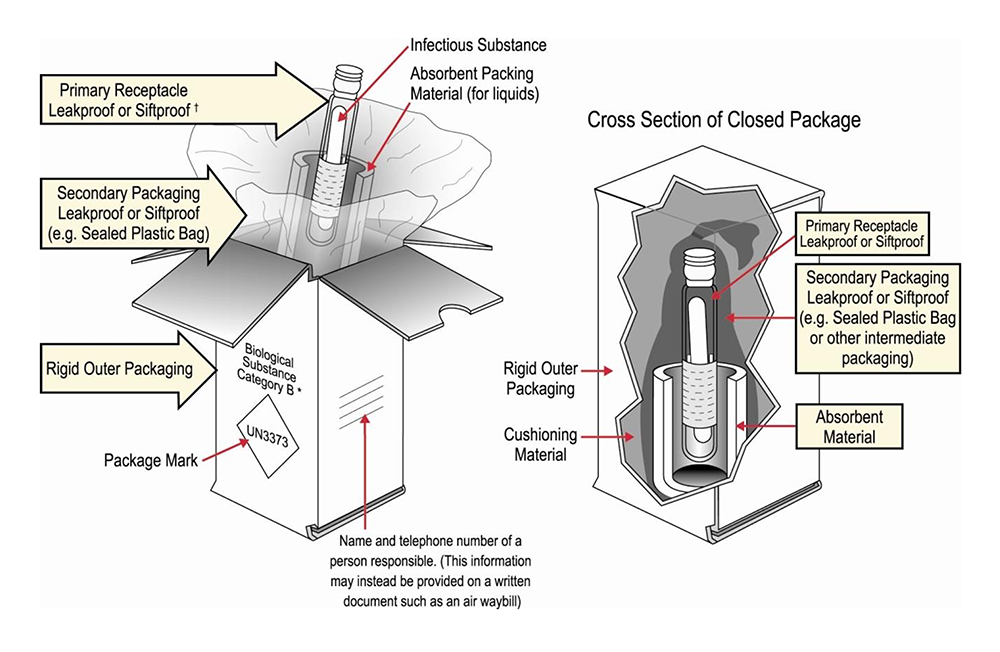Coronavirus, also known by its virus name SARS-CoV-2 and its disease name COVID-19, is appearing more and more in our news and becoming a wider spread concern, creating questions about safety protocols when transporting specimens. Samples of blood or tissue may need to be shipped for diagnostic purposes, or to a lab studying the virus to better understand its characteristics. The US Center for Disease Control and Prevention (CDC) has recently provided interim guidelines for laboratory biosafety handling and processing of specimens associated with the Coronavirus Disease 2019, stating that specimens from suspected or potential patient cases of COVID-19 should be shipped under regulations for UN 3373 Biological Substance, Category B.
UN 3373 Biological Substance, Category B

COVID-19 isn’t the first infectious substance that clinical facilities have shipped using the UN 3373 Biological Substance, Category B designation. The US Department of Transportation have well established procedures in place to classify, describe, label, mark, and package patient specimens for proper and safe shipping. These regulations include requirements for triple packaging as well as adequate absorbent and cushioning materials to prevent breakage and leaking. There are also specific labeling and marking requirements for the outside of the package, including the UN3373 mark, the words “Biological Substance, Category B”, and the name and phone number of a responsible person who can answer questions in case of emergency. Additional steps are required if dry ice is used.

If you need more information on shipping biological substances and infectious substances, Eduwhere provides two courses covering the proper shipping of Infectious Substances:
For more information on coronavirus safety, see the CDC webpage on COVID-19: https://www.cdc.gov/coronavirus/2019-ncov/lab/lab-biosafety-guidelines.html


